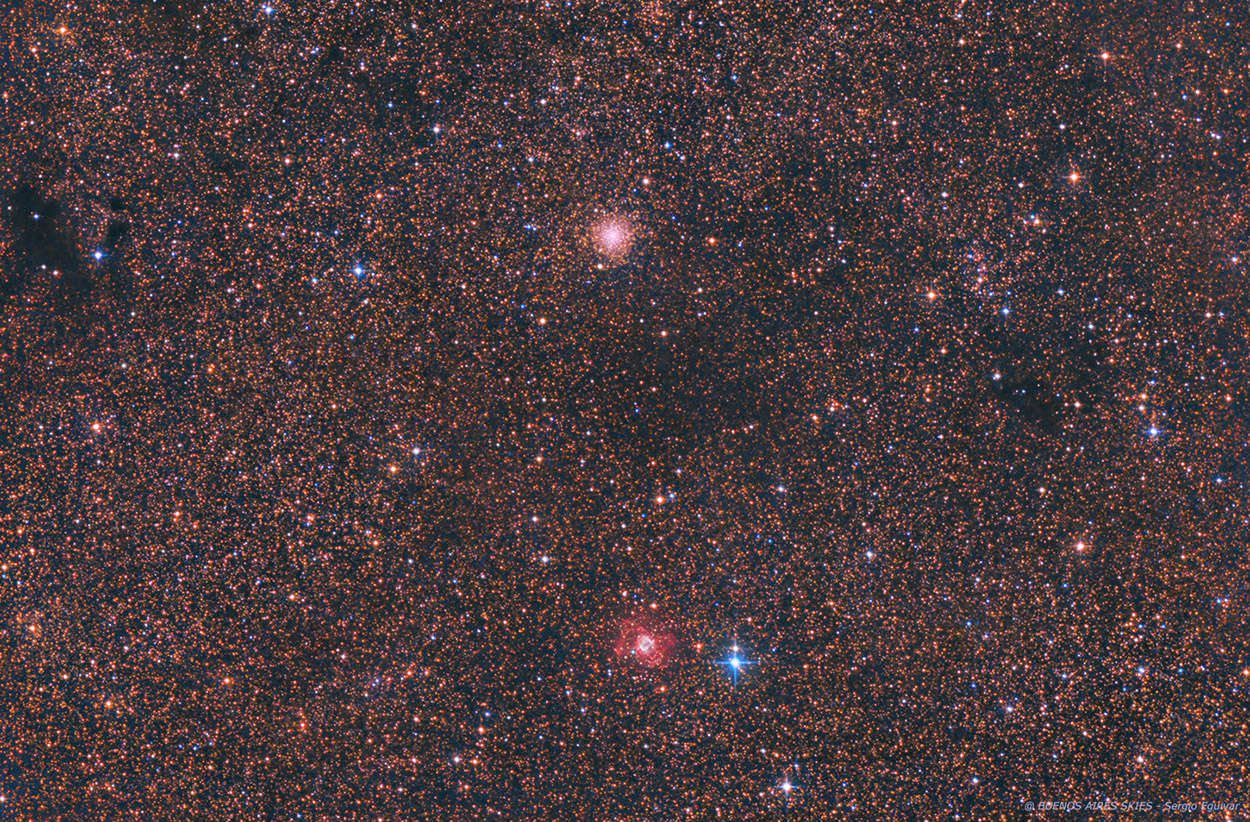
0222222222222222222222222222222222222222222222222222222.
| HOME |
NGC 6445 & NGC 6440
PLANETARY NEBULA AND GLOBULAR CLUSTER IN SAGITTARIUS (THE ARCHER)
(Image centered at: ra 17 h: 50 m / dec -20º 10')
CLICK THE IMAGE FOR A HIGH RESOLUTION VIEW
May 2025, Home Backyard in Martinez, Buenos Aires, Argentina
DATA
TYPE: Planetary Nebua and Globular Cluster
APPARENT DIAMETER: NGC 6445 4.4 arc minutes NGC 6440 4.4 arc minutes
APPARENT MAGNITUDE (V): NGC 6445 11.2 & NGC 6440 9.3
DISTANCE: NGC 6445 3300 light years & NGC 6440 28.000 light years
IMAGE INFORMATION
INSTRUMENT: 6" ORION OPTICS UK (Ultra Grade Optics) w/Sky Watcher Coma Corrector (0.9x) working at at f4.5
CAMERA: QHY 183 MONO
MOUNT: VIXEN GDPX, OAG with Starlight Xpress Lodestar
FILTERS: OPTOLONG LRGB Set Antlia Ha 3nm
SKY CONDITIONS: urban skies - Bortle 8
EXPOSURES: LHaRGB (45,120,45,45,45)
OBJECT DESCRIPTION AND IMAGE SESSION
This field of view is about 1 degree times 44 arc seconds. It covers these two gems that show up in this crowded area in the Constellation of Sagittarius. NGC 6445 is Planetary Nebula aka "Little Gem". Its bight area measur 44 arcs seconds but deep exposures show an extender outer structure expanding for about 4 arc minutes. (nearly the size of the Globular Cluster above). NGC 6445 has been classified as a bipolar planetary nebula featuring a bright central ring-shaped morphology and open bipolar lobes covering 4 light years across.
NGC 6440 was discovered by German-English astronomer William Herschel on 28 May 1786. With an apparent visual magnitude of 9.3 and an angular diameter of 4.4′, it can be observed as a fuzzy blob when viewed through a small telescope. The center of the cluster is fairly concentrated, but does not appear to have undergone a core collapse. Observations suggest it is one of the most metal–rich globular clusters in the galaxy, and it is close to solar metallicity. NGC 6440 is a rich target for Astrophysical X-ray sources. As of 2022, thirteen pulsars have been discovered in NGC 6440.